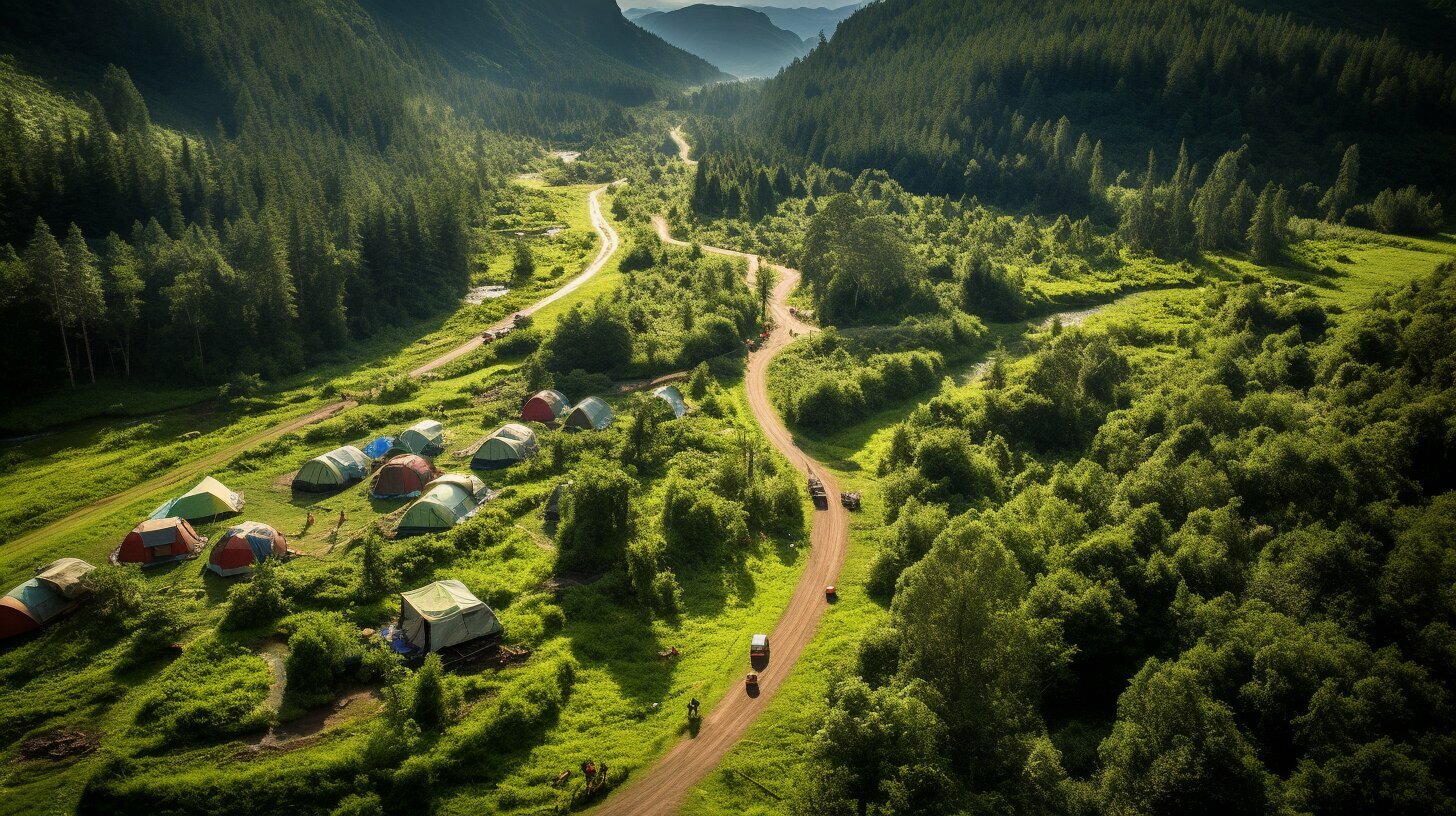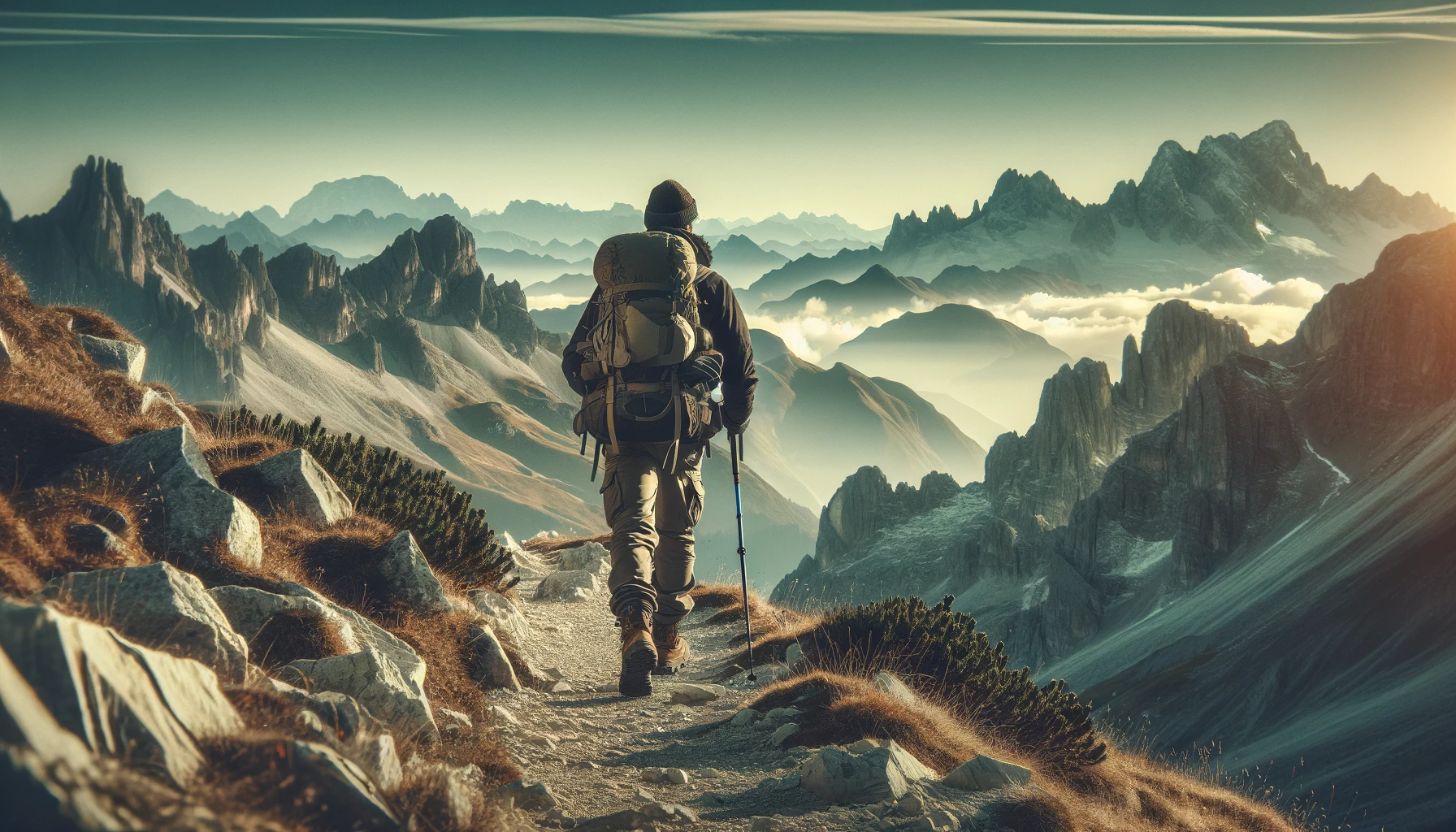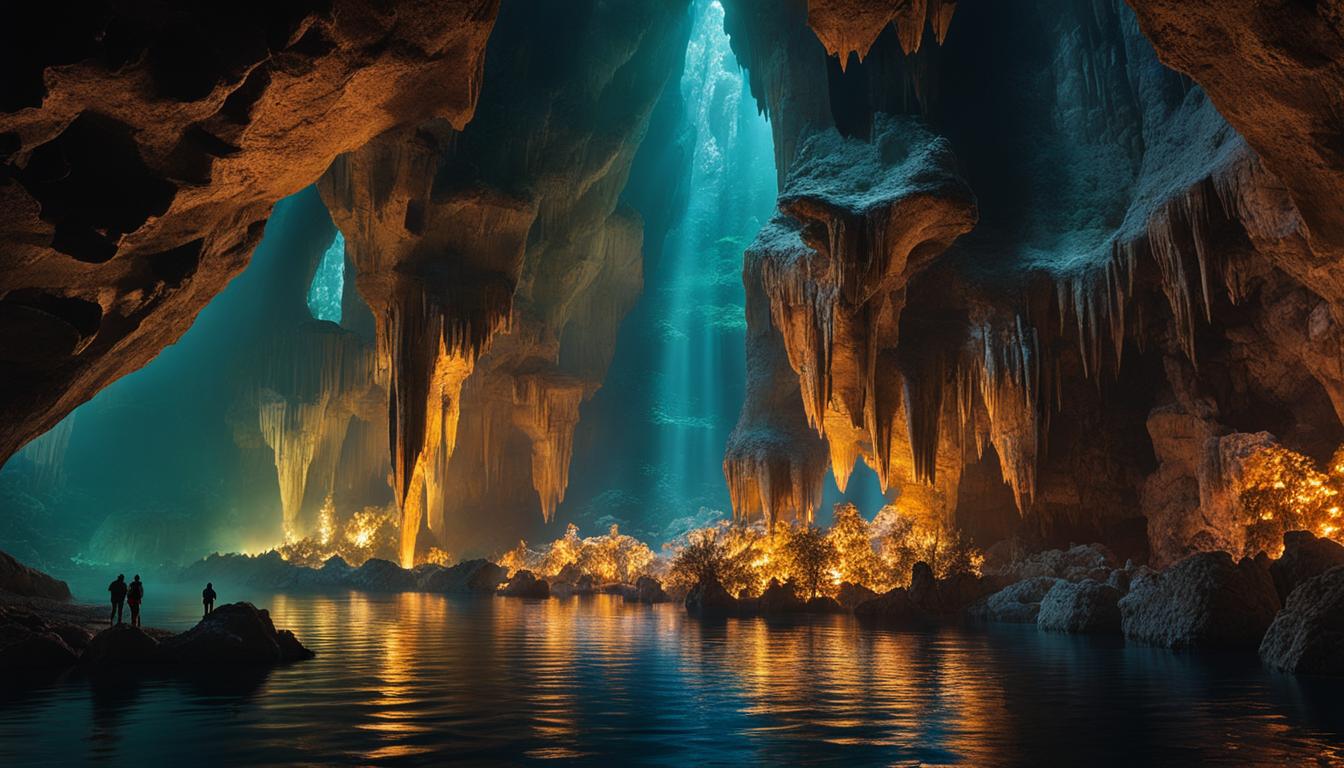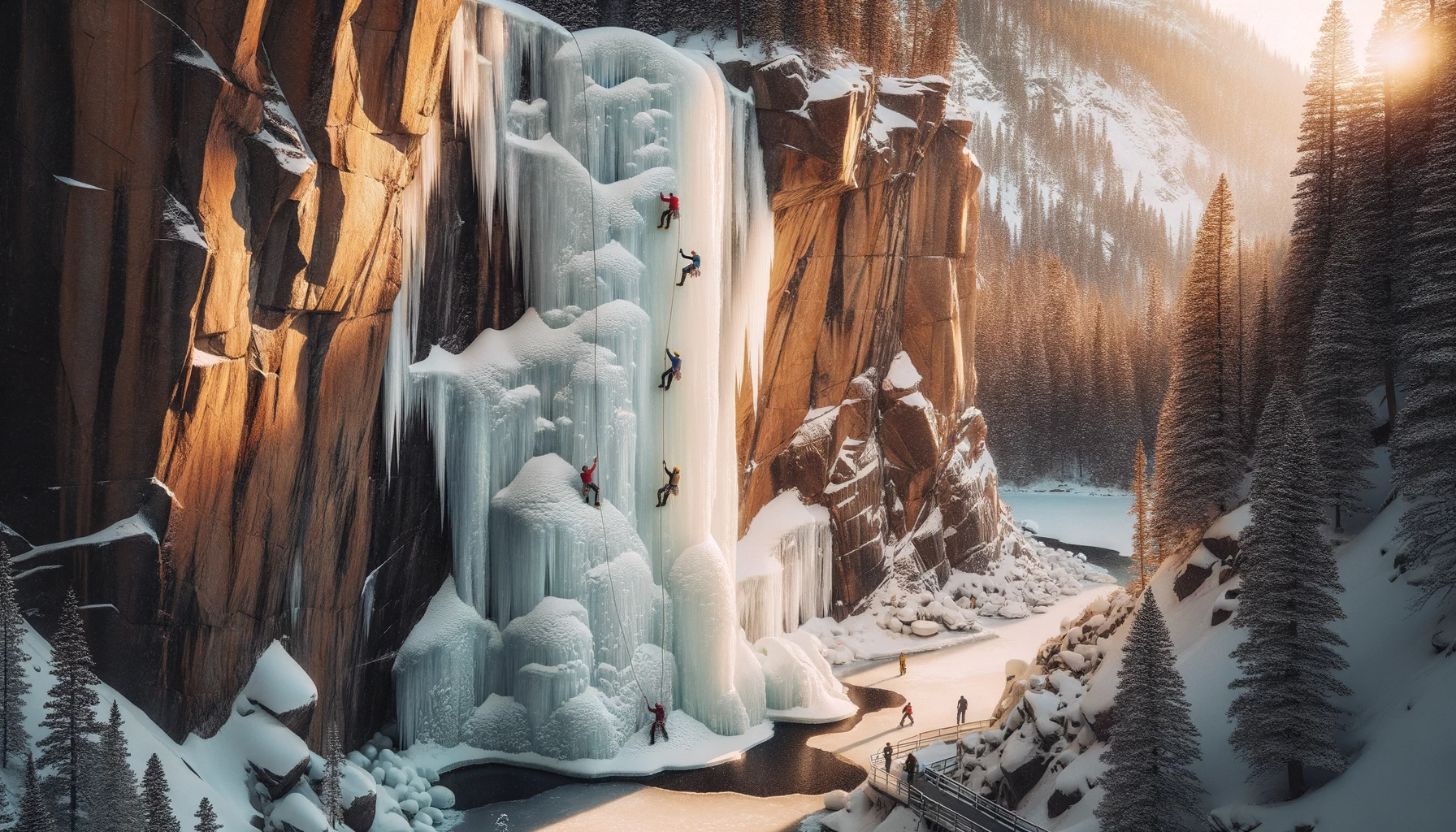Are you planning your next hiking adventure? Don’t forget to consider your camping options along the way. Camping near hiking trails offers the convenience of being close to nature while providing a base for exploring the great outdoors. With so many camping options available, it’s essential to choose the right one that suits your needs.
From tent camping to RV camping and backcountry camping, you have a variety of choices to maximize your outdoor experience. It’s also crucial to locate the best camping spots along the trail, taking into account accessibility and scenic views. With proper planning, you can ensure a safe and enjoyable camping experience.
Key Takeaways
- When planning a hiking trip, consider your camping options along the trail.
- Tent camping, RV camping, and backcountry camping are popular options for hikers.
- Locating the best camping spots near the trail requires considering factors such as accessibility and scenic views.
Maximizing your Outdoor Adventure with Proper Camping Accommodations
When it comes to camping along hiking trails, choosing the right accommodations can make a big difference in the overall experience. As a hiker, you want to ensure that you have a comfortable and safe place to sleep and store your gear while enjoying the great outdoors. Here are some camping accommodations for hikers and the pros and cons of each:
| Camping Option | Pros | Cons |
|---|---|---|
| Tent Camping | -Affordable and easy to set up -Gives a sense of immersion in nature | -Weather-dependent -May require more gear and preparation -May not provide as much protection as other options |
| RV Camping | -More spacious and comfortable -Convenient for longer stays -May have amenities like electricity, running water, and bathrooms | -Expensive and may require a larger vehicle -May limit access to certain trails and campsites -May not provide as much immersion in nature |
| Backcountry Camping | -Provides a unique wilderness experience -Allows access to remote areas -Offers a sense of self-reliance and adventure | -Requires permits and proper preparation -May require additional gear and physical exertion -May not be suitable for all hikers |
Regardless of the camping option you choose, make sure to research the campsite and trail beforehand. Consider factors such as terrain, weather conditions, and accessibility to ensure that your camping accommodations meet your needs. With the right camping and trekking options, you can make the most of your outdoor adventure and enjoy the beauty of nature.
Disclosure: When you buy through links on our site, we may earn an affiliate commission.
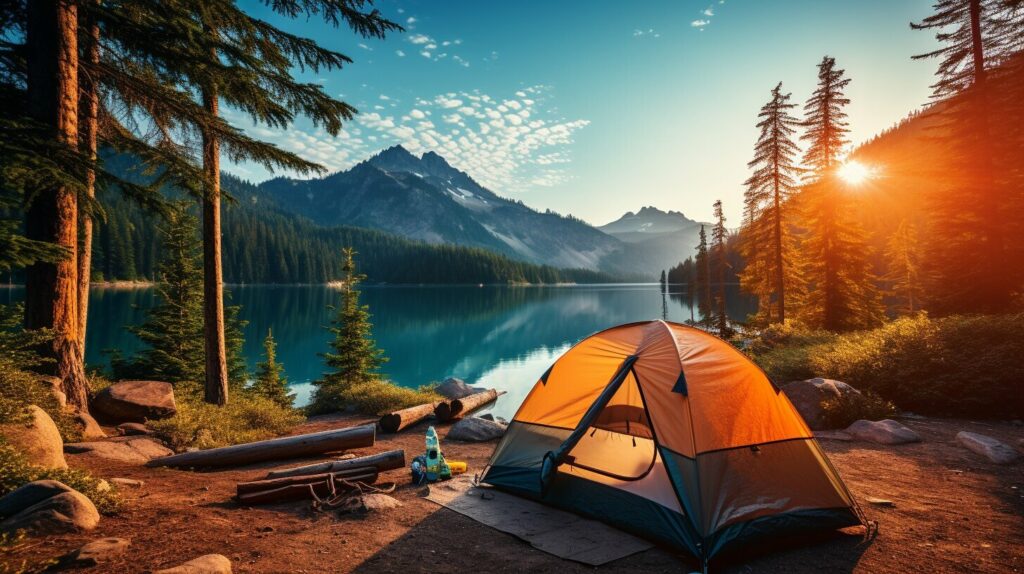
Finding the Best Camping Spots Along Hiking Trails
When it comes to camping along hiking trails, choosing the right spot can make or break your outdoor adventure. Here are some tips for finding the best camping sites:
Consider Proximity to the Trailhead
When selecting a camping spot, consider its distance from the trailhead. If you’re a beginner hiker, you may not want to hike too far before reaching your campsite. Conversely, experienced hikers may want to venture deeper into the wilderness for a more secluded camping experience.
Think About Accessibility
Accessibility is another vital factor to consider when selecting a camping spot. If you’re planning a multi-day hike, you may want to choose a site that is easily accessible and has a water source nearby. You’ll also want to ensure that the campsite is flat and free of any hazardous obstacles.
Look for Scenic Views
One of the benefits of camping along hiking trails is the opportunity to take in breathtaking views of nature. Look for campsites that offer stunning vistas or are situated close to natural features such as waterfalls or meadows. However, make sure not to damage the natural environment when exploring the area.
Research Camping Regulations
Before setting up camp, be sure to research and follow any camping regulations in the area. This may include obtaining permits, adhering to fire restrictions, and practicing Leave No Trace principles.
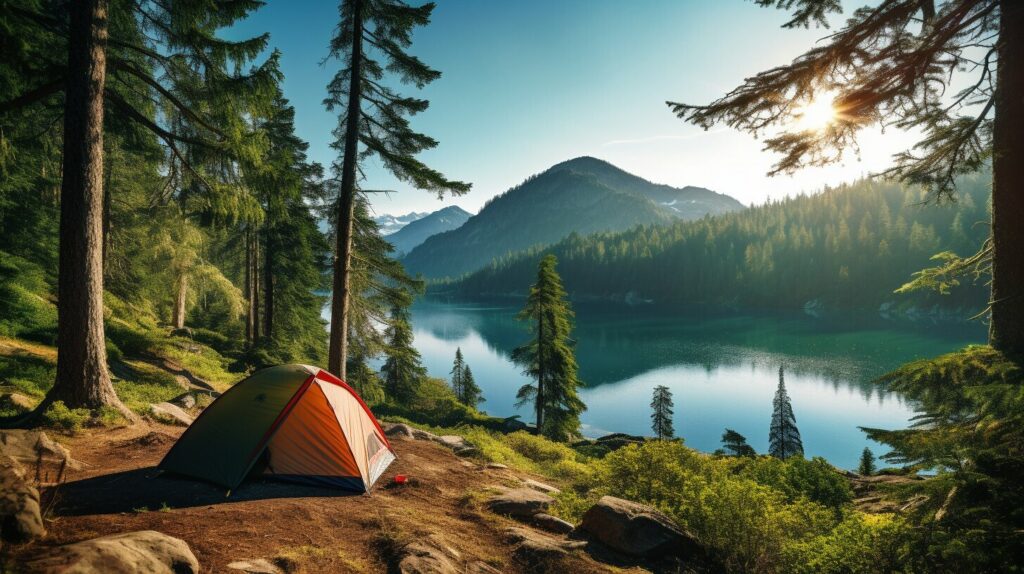
Use Online Resources to Find Camping Sites
Fortunately, several online resources can help you find the best camping spots along hiking trails. Websites such as Recreation.gov and Reserve America offer campground directories that allow you to search and book campsites in advance. You can also use apps like AllTrails and Hipcamp to find campsites and read reviews from other hikers.
Ask for Recommendations
If you’re not sure where to camp, ask for recommendations from fellow hikers or park rangers. They may have insider knowledge on the best camping spots, hiking trails, and attractions in the area. Remember to always follow their advice and abide by park rules and regulations.
Camping Destinations Near Hiking Trails: Exploring Top National Parks
When it comes to camping options along hiking trails, national parks are some of the most popular choices for outdoor enthusiasts. The United States is home to some of the most breathtaking national parks, such as Yosemite, Yellowstone, and Grand Canyon National Parks, which offer camping locations along hiking trails.
Yosemite National Park in California is a legendary destination for hikers and campers alike. The park boasts over 800 miles of hiking trails, ranging from easy walks to challenging hikes, with camping options that cater to every camper’s needs. Whether you prefer classic tent camping or the comfort of an RV, Yosemite has something for everyone.
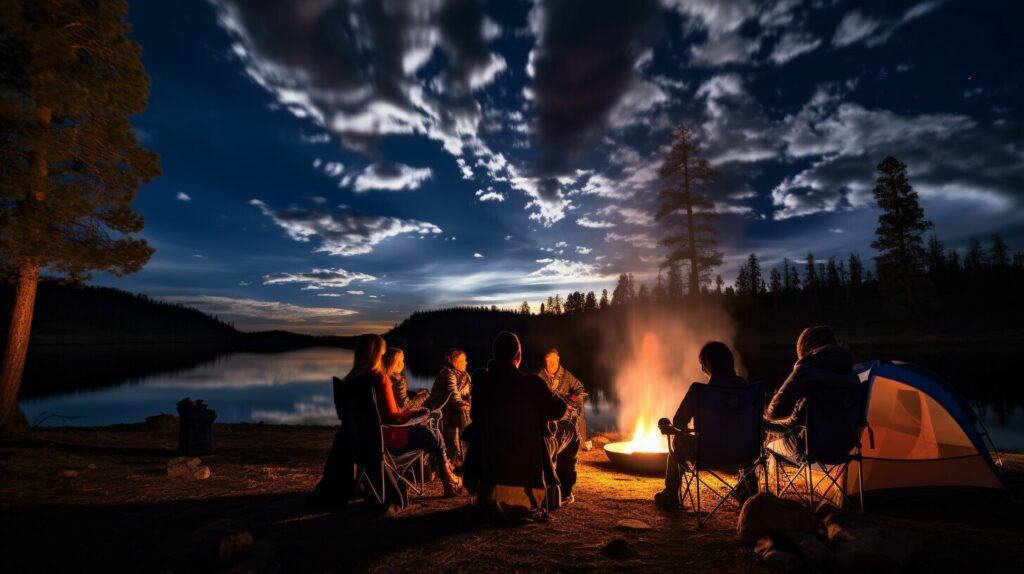
Yellowstone National Park is a natural wonderland that offers hiking and camping options unlike any other national park. The park has over 900 miles of hiking trails, with some of the most scenic trails located near the park’s campgrounds. Camping options at Yellowstone include backcountry camping, front-country camping, and RV camping.
Grand Canyon National Park in Arizona is another popular destination for hikers and campers. The park boasts over 300 miles of hiking trails, ranging from easy walks to challenging multi-day hikes, with camping options that cater to all types of campers. Whether you prefer to hike to your campsite or drive up in an RV, the Grand Canyon has plenty of camping options along its hiking trails.
In addition to Yosemite, Yellowstone, and Grand Canyon National Parks, there are numerous other national parks around the country that offer camping destinations near hiking trails. Some other popular national parks with camping options along hiking trails include Rocky Mountain National Park, Acadia National Park, and Great Smoky Mountains National Park.
Overnight Camping on Hiking Trails: Guidelines and Safety Tips
If you’re planning an overnight camping trip along a hiking trail, it’s essential to take the necessary precautions to ensure your safety and the safety of others. Here are some guidelines and safety tips to keep in mind:
Proper Planning
Before heading out on your camping trip, make sure to research the area thoroughly. Know the trail’s difficulty level, understand the weather and terrain, and check if any permits are necessary for camping in the area. Plan your route and share it with someone who is not joining you on the trip. Make sure to carry enough food, water, and other supplies to last for the duration of your trip.
Camping Permits
Many hiking trails and camping areas require a permit for overnight camping. Check with the local authorities to ensure that you have the necessary permits to camp legally. Stick to camping in designated areas and follow all instructions and regulations.
Leave No Trace Principles
Respect the wilderness and leave it as you found it. Follow the principles of Leave No Trace: pack out all trash, do not damage plants or wildlife, and do not disturb the natural surroundings. Keep noise levels low and avoid camping near water sources or in areas that could be potentially hazardous.
Safety Precautions
When camping overnight along a hiking trail, it’s essential to take safety precautions. Carry a reliable map and compass and know how to use them. Carry a first aid kit and know basic first aid skills. Be aware of wildlife in the area and keep a safe distance. Store food securely to prevent wildlife encounters. Finally, make sure to carry a communication device such as a satellite phone or personal locator beacon in case of emergencies.
By following these guidelines and safety tips, you can have a safe and enjoyable camping experience along hiking trails.
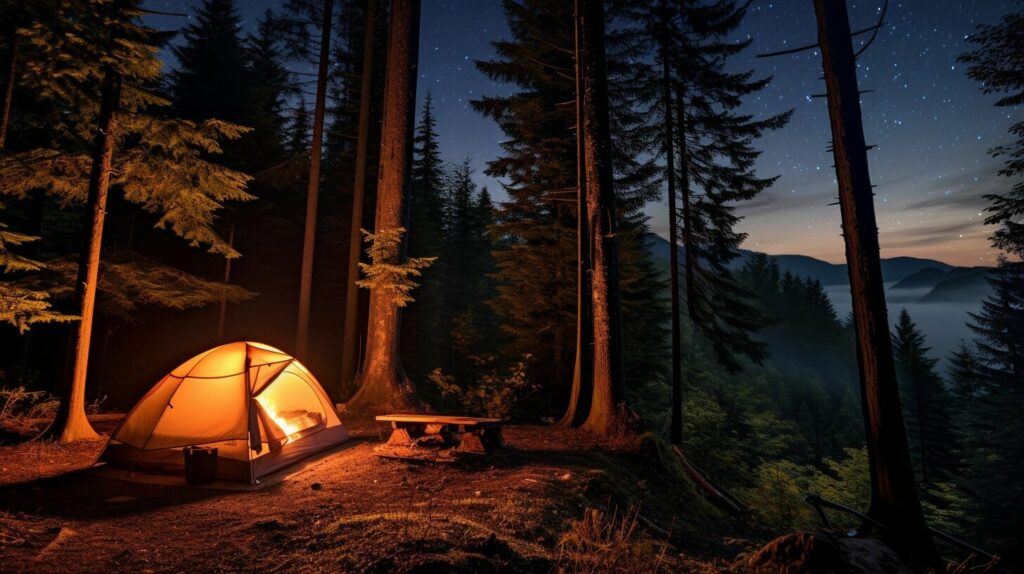
Camping Equipment for Hikers: What to Pack for an Outdoor Adventure
When you’re camping along hiking trails, it’s essential to pack the right equipment to ensure a safe and comfortable outdoor experience. Whether you’re a seasoned hiker or a beginner, having the right gear can make all the difference.
Here is a checklist of camping equipment you should consider packing for your next hiking trip:
- Tent: A good-quality tent provides shelter and protection from the elements. Look for a lightweight and easy-to-assemble option to make your camping experience hassle-free.
- Sleeping Bag: A sleeping bag will help you stay cozy and warm during chilly nights. Choose a sleeping bag that’s appropriate for the weather conditions you’ll encounter on your trip.
- Sleeping Pad: A sleeping pad provides insulation and cushioning, so you can sleep comfortably on the ground.
- Cooking Equipment: If you plan to cook meals while camping along hiking trails, consider packing a portable stove, utensils, and cookware. Don’t forget to bring along a water filtration system or purification tablets to ensure you have access to clean drinking water.
- Lights: A headlamp or flashlight will help you navigate your campsite and the trail in low-light conditions. Be sure to pack extra batteries, too.
- Clothing: Pack appropriate clothing for the weather, including base layers, warm layers, and rain gear. Pay careful attention to your footwear – choose comfortable, sturdy hiking boots that offer good traction.
- Personal Items: Don’t forget to pack essential personal items, such as sunscreen, insect repellent, toiletries, and any necessary medications. And remember to pack out all your trash and waste.
Remember to pack light and only bring what you need. Keep in mind that you’ll be carrying your gear along the trail, so try to minimize unnecessary weight. If you’re unsure about what to pack, talk to experienced hikers or consult with camping gear experts.
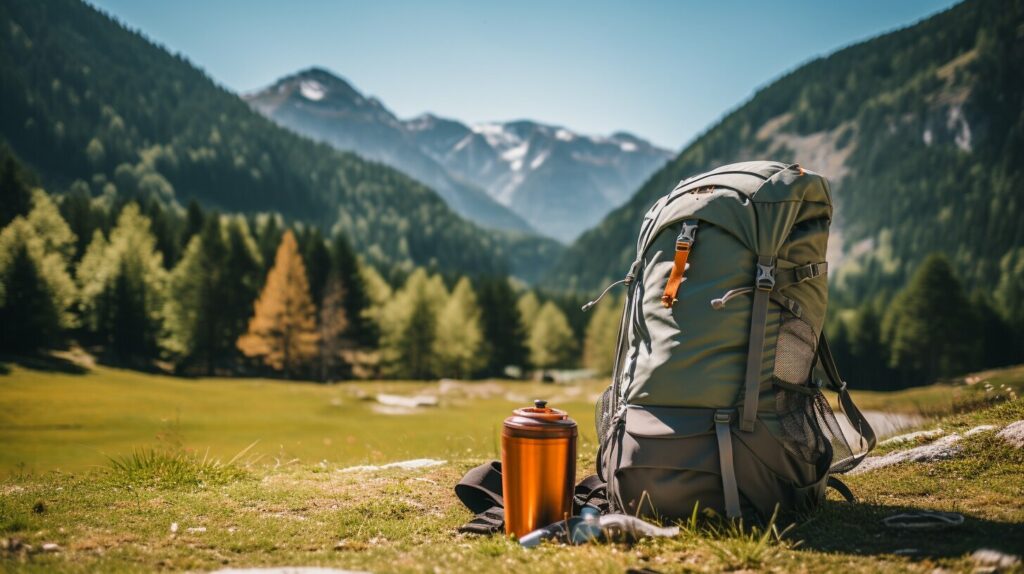
Seasonal Considerations: Camping Along Hiking Trails in Different Weather Conditions
When planning a camping trip along hiking trails, it’s important to consider seasonal variations in weather conditions. Be sure to check the weather forecast before your trip and prepare accordingly to ensure a safe and enjoyable adventure. Here are some tips to help you adapt to different weather conditions:
Camping in Hot Weather
When camping in hot weather, it’s important to stay hydrated and protect yourself from the sun’s rays. Bring plenty of water and electrolyte drinks to keep your body hydrated, and wear a wide-brimmed hat and sunscreen to protect your skin from the sun. Consider setting up camp in a shaded area, and avoid hiking during the hottest parts of the day.
Camping in Cold Weather
When camping in cold weather, it’s important to stay warm and dry to avoid hypothermia. Bring warm clothing and sleeping bags rated for low temperatures, and wear layers to trap heat close to your body. Consider setting up camp in sheltered areas to protect yourself from wind and snow, and use a waterproof tent to stay dry.
Camping in Rainy Weather
When camping in rainy weather, it’s important to stay dry to avoid getting sick. Bring waterproof clothing and shoes, and use a waterproof tent with a rainfly to stay dry. Consider setting up a tarp to create a dry area for cooking and relaxing, and avoid camping in low-lying areas that may flood.
By considering seasonal variations in weather conditions, you can be better prepared for any challenges that may arise during your camping trip along hiking trails. Remember to always prioritize safety and make informed decisions to ensure a successful and enjoyable adventure.
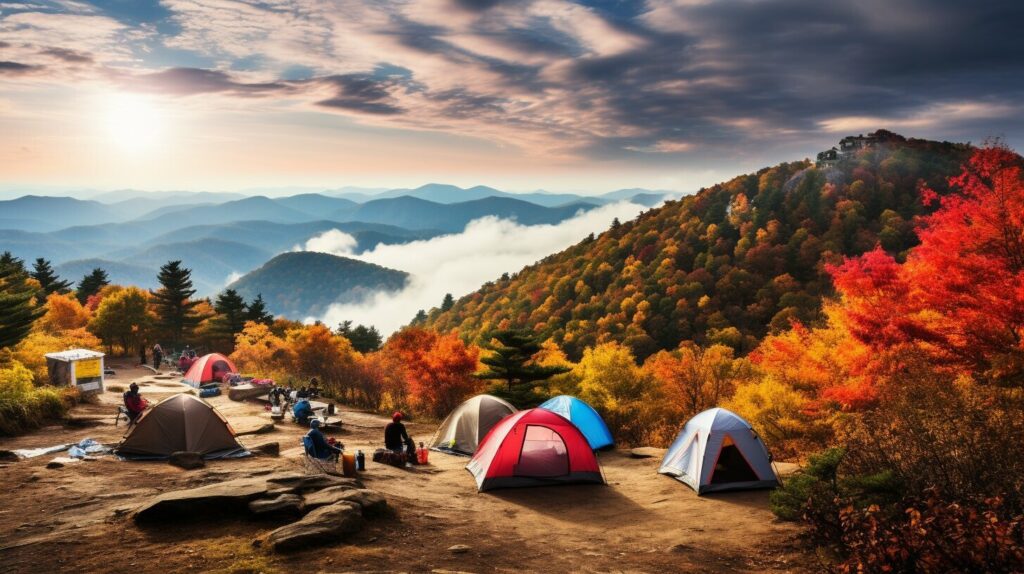
Camping Etiquette: Respecting the Wilderness and Fellow Hikers
As you explore camping options along hiking trails, it’s important to remember that you are a guest in the wilderness and must respect its beauty and fragility. Additionally, your actions can impact the experience of fellow hikers who share the same trail and campsites. Here are some camping etiquette guidelines to follow:
Leave No Trace
The Leave No Trace principles are essential to preserve the wilderness for present and future generations. These guidelines ask you to minimize your impact on the environment by packing out all trash, following established trails, and being mindful of natural resources. Camping options along hiking trails often have designated areas for tents and fires. Stick to these areas to minimize your impact on the surrounding vegetation.
Be Considerate of Fellow Hikers
When camping along hiking trails, you may share the campsite with other hikers. It’s important to be respectful of their space and privacy. Keep noise levels low and avoid shining bright lights during the night. If you need help from fellow hikers, approach them politely and be sure to ask for permission before borrowing any equipment. If you bring pets, ensure that they are well-behaved and under control at all times.
Respect Wildlife
Wildlife encounters are a common occurrence when camping along hiking trails. It’s important to remember that these animals are wild and may pose a danger to humans if they feel threatened. Keep a safe distance and avoid feeding them. Additionally, do not disturb their natural habitats or leave behind food or trash that may attract them.
Practice Fire Safety
When camping along hiking trails, fires can provide warmth and be a source of comfort. However, it’s important to practice fire safety to prevent forest fires. Use established fire rings and be mindful of the surrounding vegetation. Ensure that the fire is out before leaving your campsite and be aware of any fire restrictions in the area.
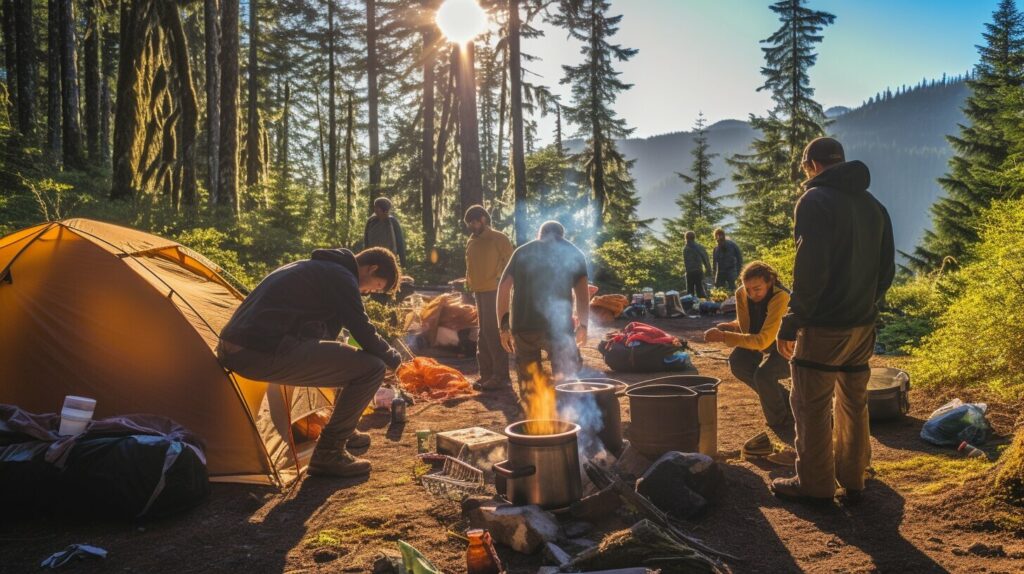
By following these camping etiquette guidelines, you can help preserve the beauty of the wilderness and ensure that others can enjoy it long after you’ve left. Remember to be respectful, responsible, and mindful of your impact on the environment and fellow hikers.
Camping Resources and Apps for Hikers
Are you planning a camping trip along hiking trails and in need of camping resources and apps to make your experience more enjoyable? Look no further than these recommended tools:
Campendium
Campendium is a comprehensive campground directory that provides user-generated reviews and photos of camping locations along hiking trails. It features a rating system, making it easy to find top-rated camping spots. With Campendium, you can filter searches by amenities such as showers, Wi-Fi, and pet-friendly facilities.
AllTrails
AllTrails is an app that provides hikers with detailed trail maps, descriptions, and reviews. It also allows users to filter their search for hiking trails with camping options. With over 100,000 trails in its database, AllTrails is an excellent resource for planning a hiking and camping trip along hiking trails.
Gaia GPS
Gaia GPS is a navigation app that provides real-time topographical maps, route planning, and GPS tracking. It also includes information on camping sites along hiking trails, which can be filtered by amenities and accessibility. With Gaia GPS, you can customize your map layers, track your progress, and share your route with others.
ReserveAmerica
ReserveAmerica is an online platform that allows users to book camping sites at national parks and other recreational areas. It offers a user-friendly interface, making it easy to search for camping options along hiking trails, select dates, and make reservations. With ReserveAmerica, you can also purchase camping permits and park passes.
By utilizing these camping resources and apps, you can streamline your planning process, find the best camping spots along hiking trails, and make the most of your outdoor adventure.
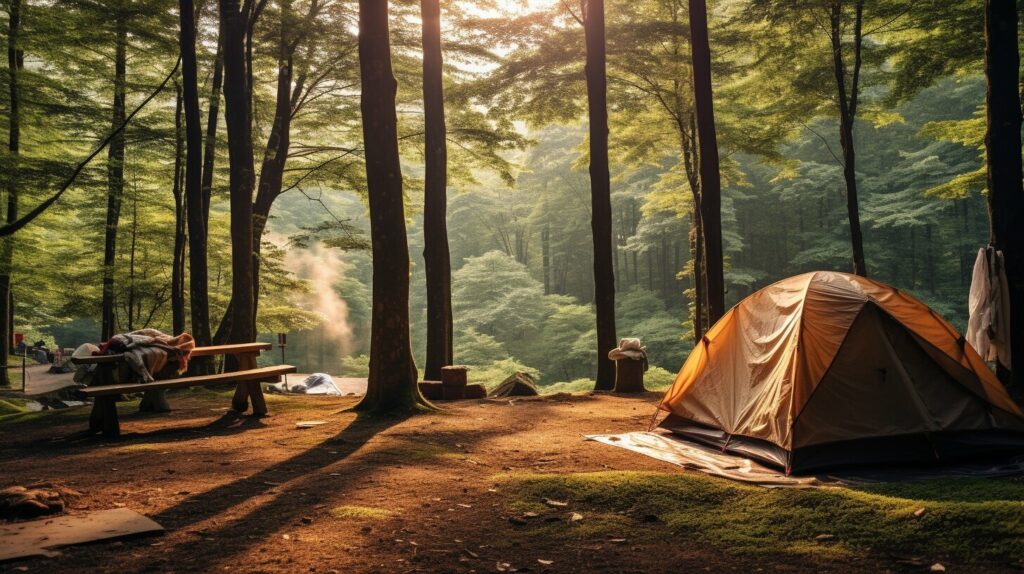
Camping Equipment for Hikers: What to Pack for an Outdoor Adventure
When camping along hiking trails, it’s crucial to pack the right equipment to ensure a comfortable and safe outdoor adventure. Here are some essential items to include on your packing list:
Tent and Sleeping Gear
A good quality tent is a must for a successful camping trip along hiking trails. Look for a lightweight and easy-to-set-up option that fits your needs. Don’t forget a sleeping bag and sleeping pad to keep you warm and comfortable at night.
Cooking Supplies
Bring a portable stove, fuel, and cooking utensils for preparing meals. Don’t forget to pack food and snacks that are easy to prepare and store, such as granola bars, dried fruits, and trail mix.
Water and Water Filtration System
Carry plenty of water and a water filtration system to keep yourself hydrated along the hiking trail. The filtration system can help you refill your water bottles from natural sources safely.
First Aid Kit
It’s essential to have a well-stocked first aid kit in case of any injuries or accidents. The kit should include bandages, gauze, antiseptic wipes, pain relievers, and any other medications that you may need.
Insect Repellent and Sun Protection
Protect yourself from harmful sun rays and bug bites by packing sunscreen, sunglasses, and insect repellent. Choose a sunscreen that provides broad-spectrum protection and has an SPF of at least 30. A good quality bug spray with DEET can protect you from mosquito bites and other insects.
Navigational Tools
Bring a map and compass or a GPS device to help you navigate along the hiking trail. Make sure you know how to use them and have a backup plan in case your electronic devices fail or signal is lost.
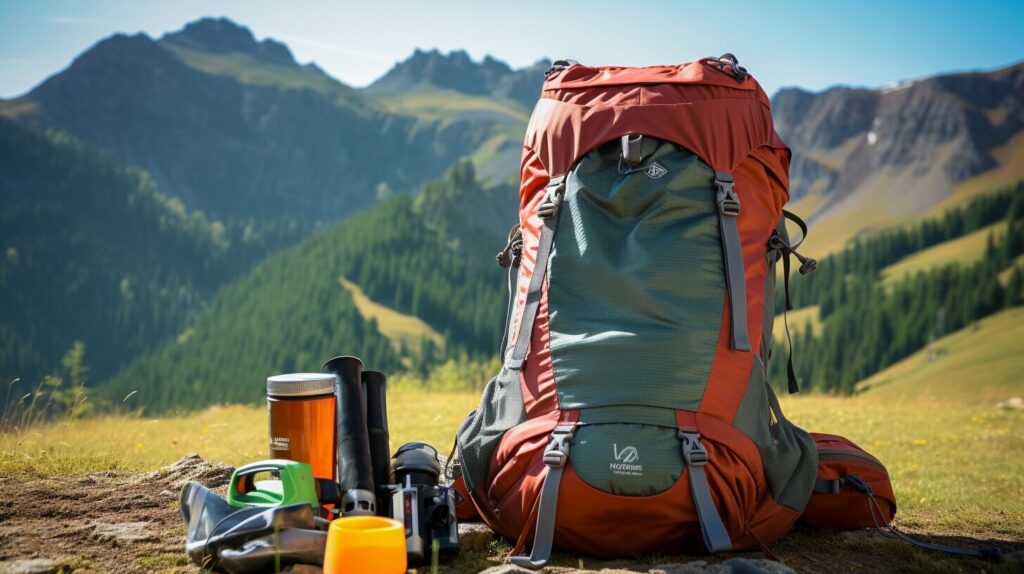
With this essential camping gear, you can enjoy a comfortable and safe outdoor adventure while exploring the hiking trails. Remember to pack light, pack smart, and always follow Leave No Trace principles by leaving your campsite as you found it. Happy camping!
Tips for Beginner Hikers: Making the Most of Camping Along Hiking Trails
If you are a beginner hiker planning your first camping trip along hiking trails, you need to consider several factors to make the most of your adventure.
First and foremost, choose a trail that matches your fitness level and experience. Look for trails that are marked as beginner-friendly and have suitable camping options along the way. You can use camping directories and apps to research camping options along your chosen trail.
When selecting camping gear, focus on essentials such as a tent, sleeping bag, and backpack. Avoid overpacking and aim for lightweight gear that is easy to carry on your hike.
It’s also crucial to pay attention to the weather forecast and pack accordingly. Bring appropriate clothing and gear for the expected weather conditions.
During your hike, make sure to take regular breaks and stay hydrated. Carry enough water and snacks to keep you energized throughout the day.
Finally, remember to follow camping etiquette and Leave No Trace principles. Respect the environment, fellow hikers, and wildlife. By doing so, you’ll not only have a successful camping trip but also ensure the trails and campsites are preserved for future hikers to enjoy.
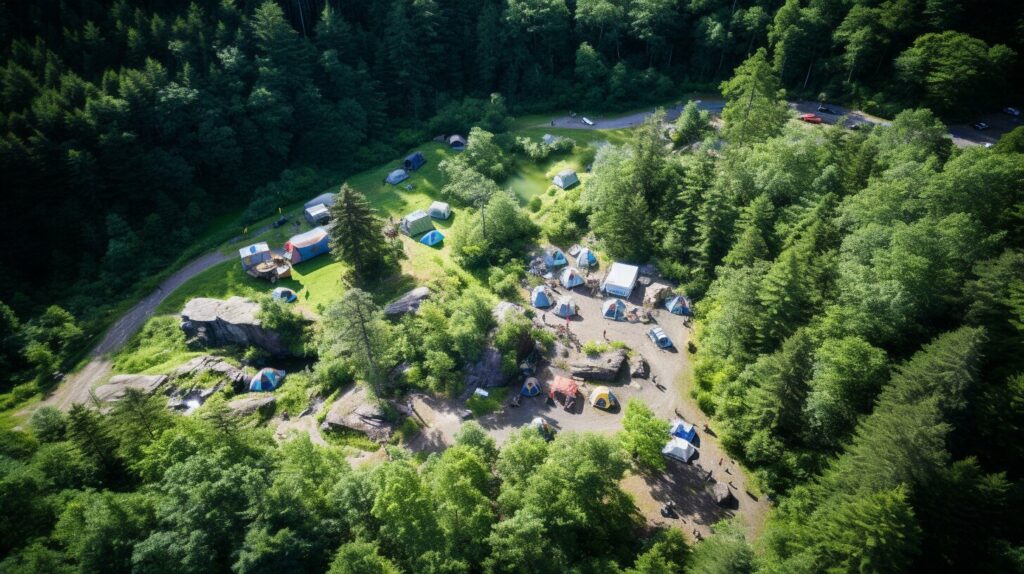
Following these tips will help you make the most of your camping trip along hiking trails. Remember to plan ahead, pack smart, and appreciate the beauty of nature around you.
Camping Options Along Hiking Trails: Plan Your Next Outdoor Adventure
After reading through this comprehensive guide, you are now equipped with the necessary knowledge to plan your next camping trip along hiking trails. With an abundance of camping options available throughout the United States, it’s essential to consider the type of camping accommodations that best suit your needs and preferences.
When selecting a camping site, don’t forget to research the best camping spots that offer proximity to the trailhead, accessibility, and scenic views. Remember to consider seasonal variations and weather conditions that may affect your camping experience, and always prioritize safety measures to ensure a safe and enjoyable trip.
Apps and online resources such as campground directories and navigation tools can help you locate the best camping options along hiking trails. Be mindful of practicing good camping etiquette by minimizing your impact on the environment and respecting fellow hikers.
Whether you’re a seasoned hiker or a beginner, camping along hiking trails provides a unique outdoor experience that allows you to immerse yourself in nature. So pack your camping gear and get ready to explore the great outdoors.
FAQ
Q: Can I camp along hiking trails?
A: Yes, many hiking trails offer camping options along the way. It’s a great way to immerse yourself in nature and extend your outdoor adventure.
Q: What are the different camping accommodations for hikers?
A: Hikers have various camping options, including tent camping, RV camping, and backcountry camping. Each option has its own advantages and considerations.
Q: How can I find the best camping spots along hiking trails?
A: To find the best camping spots along hiking trails, consider factors such as proximity to the trailhead, accessibility, and scenic views. Researching online resources and seeking recommendations from fellow hikers can also be helpful.
Q: Which national parks offer camping near hiking trails?
A: Many national parks in the United States offer camping facilities near hiking trails. Some popular choices include Yosemite National Park, Rocky Mountain National Park, and Glacier National Park.
Q: What guidelines and safety tips should I follow for overnight camping on hiking trails?
A: When engaging in overnight camping along hiking trails, it’s important to plan ahead, obtain necessary permits, follow Leave No Trace principles, and take appropriate safety precautions. This includes packing essential gear, setting up camp responsibly, and being aware of potential wildlife encounters.
Q: What camping equipment should I pack for a hiking trip?
A: For a successful camping trip along hiking trails, make sure to pack essentials such as a tent, sleeping bag, cooking equipment, food, water, navigation tools, and appropriate clothing for the weather conditions.
Q: What considerations should I keep in mind for camping along hiking trails in different weather conditions?
A: Camping along hiking trails requires adapting to different weather conditions. Be prepared for temperature changes, rain, wind, and snow depending on the season and location. Choose appropriate gear and clothing, and stay informed about weather forecasts.
Q: How should I practice camping etiquette while hiking?
A: It’s important to practice good camping etiquette to respect the wilderness and fellow hikers. This includes minimizing environmental impact, properly disposing of waste, keeping noise levels low, and being considerate of other campers.
Q: Are there any camping resources and apps available for hikers?
A: Yes, there are several camping resources and apps that can assist hikers in finding suitable camping options along hiking trails. These include campground directories, online platforms, and navigation tools.
Q: What safety measures should I take while camping along hiking trails?
A: While camping along hiking trails, it’s important to stay prepared and informed. This includes knowing how to handle wildlife encounters, carrying emergency communication devices, having first aid knowledge, and being proficient in navigation techniques.
Q: Any tips for beginner hikers camping along hiking trails?
A: For beginner hikers embarking on their first camping trip along hiking trails, it’s important to choose suitable trails, start with shorter distances, invest in proper gear, and seek advice from experienced hikers. Take your time, enjoy the experience, and be prepared for the challenges and rewards of outdoor exploration.

